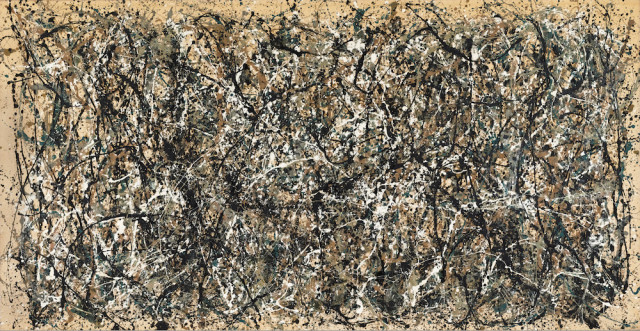Art & Exhibitions
Jackson Pollock Tried to Kill Abstraction
THE DAILY PIC: Pollock's drips were bullets aimed at Mondrian's heart.

THE DAILY PIC: Pollock's drips were bullets aimed at Mondrian's heart.

Blake Gopnik


THE DAILY PIC (#1493): When Jackson Pollock painted One: Number 31, 1950, it became an instant classic, and it’s now the centerpiece in the show of MoMA’s Pollock holdings that is the subject of all five of my columns for this week. Pollock’s mature paintings are often billed as the apotheosis of American abstraction, but I’ve got reason to believe that they were actually a reaction to its failure.
That failure was being felt everywhere in elite art-world circles in the years around 1947, just when Pollock finalized his signature drips. Take the case of the Mondrian disciple Balcomb Greene, now forgotten but once a huge star. He had helped found the American Abstract Artists group in the 1930s, insisting that “the abstract artist can approach man through the most immediate of aesthetic experiences.” But by the mid-1940s he had begun to photograph nudes and introduce veiled references to them in his paintings, as part of “the trend back toward the realm of natural appearances” that one of his reviewers felt was widespread after World War II.
So rather than being an affirmation of the abstract art that Kandinsky and Malevich and Mondrian had unloosed on the art world, and that MoMA proselytized, Abstract Expressionism was really about its final rejection. AbEx turned away from geometry and the purely visual to return the human figure, in the form of the paint-splashing artist and his reacting viewer, to the center of art. Guston’s klansmen and Warhol’s movie stars followed from that as much as they reacted against it. (Sidney and Harriet Janis Collection Fund (by exchange), 1968; © 2016 Pollock-Krasner Foundation / Artists Rights Society (ARS), New York)
For a full survey of past Daily Pics visit blakegopnik.com/archive.